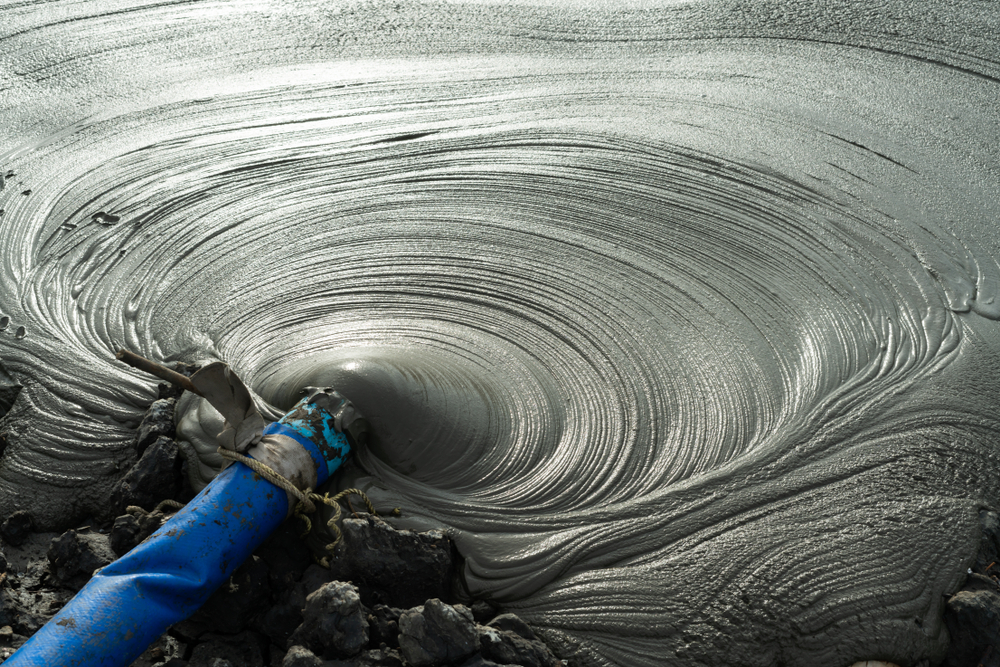EN 15322 Determination of Solids Content in Drilling Fluids Test
The Determination of Solids Content in Drilling Fluids (Mud) test, governed by EN 15322, is a critical procedure for ensuring the quality and performance of drilling mud used in oil and gas exploration. This testing ensures that the solids content in drilling fluids remains within specified limits to prevent equipment wear, enhance fluid stability, and optimize drilling efficiency.
The primary goal of this test is to measure the total amount of solid particles present in a given volume of drilling fluid. The standard provides detailed procedures for sample preparation, instrumentation setup, and measurement techniques. This ensures that the testing process is consistent across laboratories, maintaining high standards of accuracy and reliability.
Drilling fluids play a crucial role in oil and gas operations by providing support to the borehole wall, carrying cuttings out of the wellbore, cooling the drill bit, and transmitting power from the motor. The solids content in drilling fluids is an essential parameter because it affects various operational aspects:
- Drillability: Affects how easily the fluid can circulate through the borehole.
- Mud weight: Influences the pressure exerted on the formation to prevent blowouts.
- Suspension properties: Ensures that cuttings remain suspended in the fluid until they are removed from the wellbore.
The EN 15322 standard specifies a method for determining the solids content by filtering the drilling fluid through a specified filter medium and then measuring the mass of the retained solids. This process involves several steps:
- Sample preparation: Collect an adequate volume of representative drilling fluid.
- Filtering: Pass the sample through a pre-weighed filter to retain solid particles.
- Drying: Dry the filter and retained solids to a constant weight at 103°C ± 2°C.
- Weighing: Accurately weigh the dried filter and retained solids.
- Calculation: Use the formula provided in EN 15322 to calculate the total mass of the solid particles as a percentage by weight relative to the volume of drilling fluid.
The standard also provides acceptance criteria for different types of drilling fluids, ensuring that operators and manufacturers can meet regulatory requirements. This test is crucial because it helps in optimizing the mud formulation to achieve the desired performance characteristics while minimizing environmental impact.
Understanding the solids content is paramount for several reasons:
- To prevent equipment wear by reducing abrasive effects from excess solid particles.
- To enhance fluid stability and viscosity control, which are vital for effective drilling operations.
- To ensure that the mud remains capable of suspending cuttings without settling prematurely.
The EN 15322 standard is widely recognized in the oil and gas industry due to its reliability and consistency. It has been adopted by numerous companies and regulatory bodies, ensuring a uniform approach to testing across different regions and operations.
| Parameter | Description | Unit | Range |
|---|---|---|---|
| Total Solids Content | The mass of solid particles retained on the filter. | % by weight | 0.1% to 5% (depending on mud type) |
This table provides a clear overview of the parameter being measured and its acceptable range, which is crucial for ensuring compliance with industry standards.
Why It Matters
The importance of the EN 15322 test cannot be overstated. The solids content in drilling fluids directly impacts operational efficiency, cost-effectiveness, and environmental sustainability:
- Operational Efficiency: High solids levels can lead to increased friction, reducing drillability and overall efficiency.
- Cost-Effectiveness: Excessive solids content can increase the frequency of mud replacement, leading to higher operational costs.
- Environmental Sustainability: Optimal solids management helps minimize environmental impact by preventing excess solid waste from entering ecosystems.
By adhering to EN 15322, oil and gas companies can ensure that their drilling fluids meet the necessary performance criteria, leading to safer and more efficient operations. This standard is particularly important in deepwater drilling and unconventional reservoirs where precise control over mud properties is critical.
Industry Applications
The EN 15322 test is applicable across various segments of the oil and gas industry, including:
- Exploration: Ensuring that drilling fluids perform optimally during initial exploration phases.
- Production: Maintaining fluid quality to enhance production efficiency in established fields.
- Environmental Monitoring: Assessing the impact of drilling operations on surrounding environments.
| Application | Description |
|---|---|
| Exploration Drilling | Determining the suitability of drilling muds for deepwater exploration. |
| Shale Gas Extraction | Evaluating the impact of drilling fluids on shale gas extraction processes. |
| Offshore Drilling | Maintaining fluid stability for offshore operations. |
| Enhanced Oil Recovery (EOR) | Ensuring that drilling fluids do not interfere with EOR processes. |
The test is particularly relevant in deepwater and unconventional reservoir operations, where precise control over mud properties is essential. By adhering to this standard, companies can ensure optimal performance and efficiency across various applications.
Quality and Reliability Assurance
Ensuring the quality and reliability of drilling fluids through EN 15322 testing is crucial for maintaining operational excellence in the oil and gas industry:
- Consistency: The standard provides a consistent method for measuring solids content, ensuring that results are comparable across different laboratories.
- Regulatory Compliance: Adhering to EN 15322 helps companies meet regulatory requirements and maintain compliance with international standards.
- Risk Mitigation: By identifying potential issues early, the test helps mitigate risks associated with poor drilling fluid performance.
The use of this standard also fosters a culture of continuous improvement within organizations. Regular testing ensures that mud formulations are optimized for specific operational conditions, leading to better performance and reduced downtime.
Quality assurance in drilling fluids is not just about meeting regulatory requirements but also about enhancing overall operational efficiency. By adhering to EN 15322, companies can ensure that their drilling fluids perform optimally under various conditions, contributing to safer and more efficient operations.





